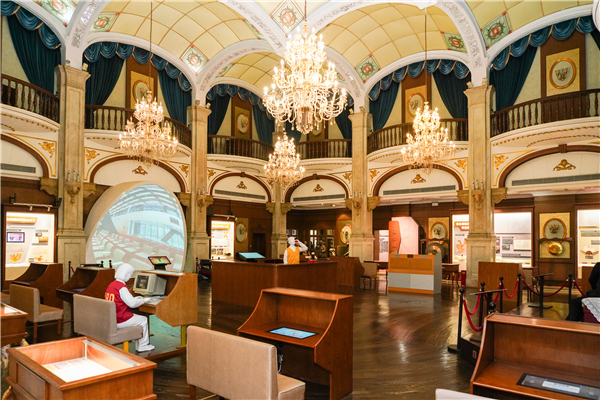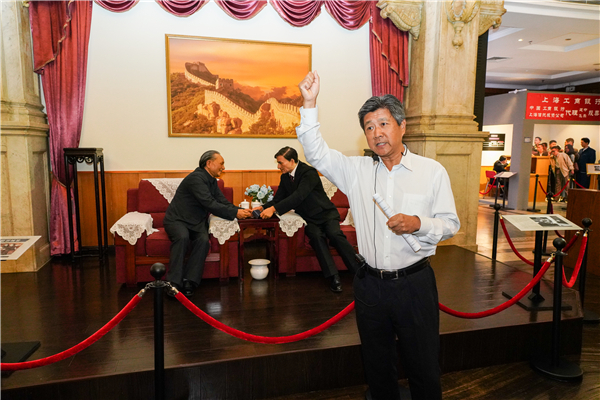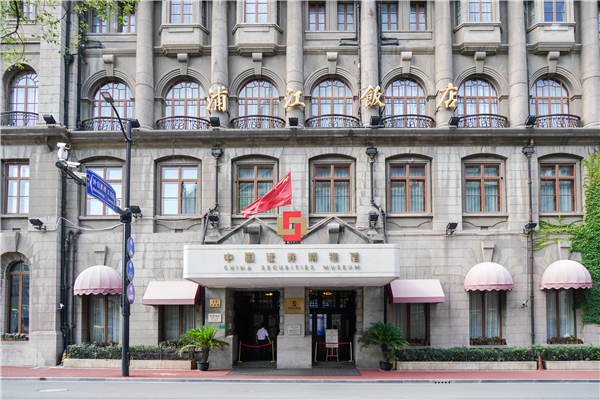In November 1986, John J. Phelan Jr., chairman of the New York Stock Exchange (NYSE), visited China to attend the Sino-US Seminar on Financial Markets. He met Deng Xiaoping at the Great Hall of the People. Entrusted by Deng, the People’s Bank of China sent him a stock issued by the Shanghai Feilo Acoustics Company. With a face value of RMB 50, it was the first share issued after Reform and Opening-up. Interestingly, the stock Phelan received once belonged to Zhou Zhishi, deputy governor of the People’s Bank of China, Shanghai branch.

(China’s first stock after Reform and Opening-up was issued by Shanghai Feilo Acoustics Company in November 1984. Photo provided by China Securities Museum)
Upon receiving the gift, the first foreign shareholder-to-be of a Chinese listed company requested a transfer procedure, which worried China for security reasons and a lack of budget. But Phelan paid from his own pocket, making it all the way from Beijing to the Shanghai Trust Company (Jing’an Branch) of the Industrial and Commercial Bank of China, and went straight to the first securities trading counter of New China. It was there that he finished the transfer procedure. After getting back home, Phelan put this stock alongside a photo with Deng in the exhibition gallery of the NYSE.


(Peacock Hall of Astor House Hotel (currently China Securities Museum)
The story was told by Li Gang, senior manager of the China Securities Museum Administration Department of Shanghai Stock Exchange. The museum was built on the former site of Pujiang Hotel (better known as Astor House Hotel). “Pujiang Hotel is quite famous,” said Marshall Strabala, chief architect of Shanghai Tower, with a smile, but he said it was the first time for him to hear this anecdote.
Today, Deng’s meeting with Phelan and the trade scene in the stock office of Jing’an District has been recreated in the museum. The earliest stock of China can also be found here. The thin paper bearing the words “Shares Ticket of Kaiping Mining Bureau” lies in the showcase on the third floor. While visiting the museum, Lisa Hahn, from the Consulate General of the United States in Shanghai, asked with curiosity, “Is it the original?”“No,” answered Li, “In order to protect relics, we show a copy instead of the authentic one issued in 1881.”
Home to several historical moments in China
With a history of over 170 years, the Astor House Hotel set many new records in China. Formerly named Richard’s Hotel, it is not only the first hotel built by a western merchant but also the first modern hotel in China. In 1846, Peter Felix Richards, a Scottish merchant established the hotel near the Bund and 11 years later, he moved it to the present location, No.15, Huangpu Road.
In this hotel seven of the first electric lights in China were installed and tested on July 26, 1882.
The first ballroom dance party of China took place here. The earliest telephones in China were also installed here, and the earliest film with partial sound imported from the West was screened in the hotel in June, 1908.
After the Anti-Japanese War and Liberation War, the Astor House Hotel changed its Chinese name to the Pujiang Hotel, specializing in serving foreigners and overseas Chinese. On December 19, 1990, the Shanghai Stock Exchange (SSE), the first stock exchange of China, was inaugurated, making the hotel witness the birth and growth of the capital market in New China.
Besides, Astor House Hotel was one of the first gas and tap-water users in Shanghai, and enabled China to know internationalized products.

(Astor House Hotel (currently China Securities Museum))
Great building stands the test of time
Astor House Hotel was expanded in 1907. Based on the Victorian brick-wood structure, the baroque architecture has a British neoclassical style. It is one of the most excellent historical buildings in Shanghai and is also known as a Shanghai Architecture Milestone. Its current look and pattern formed in the 1920s.
The Peacock Hall is the distinctive main hall of the hotel, which used to be the most luxurious ballroom and the most famed social place in the Bund. There are 12 white roman columns, teak flooring and a stained-glass dome. Between 1990 and 1997, the Peacock Hall was used as the first trading floor of the SSE.
On January 1, 2018, the Astor House Hotel closed. After maintenance, the China Securities Museum was established on the original site in the same year.
During his visit, Marshall Strabala wandered around a shared atrium towering above several rooms that have housed celebrities. He looked up at the red wall and the winding corridor from time to time.
Celebrities stay as icing on the cake
As the largest hotel in the Far East at that time, the Astor House Hotel housed many big names such as Ulysses S. Grant, Bertrand Russell, Albert Einstein and Charlie Chaplin. In 1927, Zhou Enlai stayed in the hotel for two months. And the rooms are well preserved.
Li told the visitors another story of Einstein’s visit to Shanghai from Japan. It is said that during his stay in the Astor House Hotel, an attendant brought him an overseas telex informing that his general relativity theory had won him a Nobel Prize.
Founded in the 19th century, Astor House Hotel went through the bloody wars called the Battle of Shanghai and Shanghai Campaign, which took place in the first half of the 20th century. In the 1990s, it witnessed the development of the capital market in China. Formerly a foreign-funded hotel, the US Navy Club and the Shanghai Stock Exchange, the building now houses the China Securities Museum. It has been passed from hand to hand over three centuries. Although it experienced ups and downs, it didn’t change the outlook. It is not only the window through which Western civilization entered, but also a true witness of Shanghai’s history.
